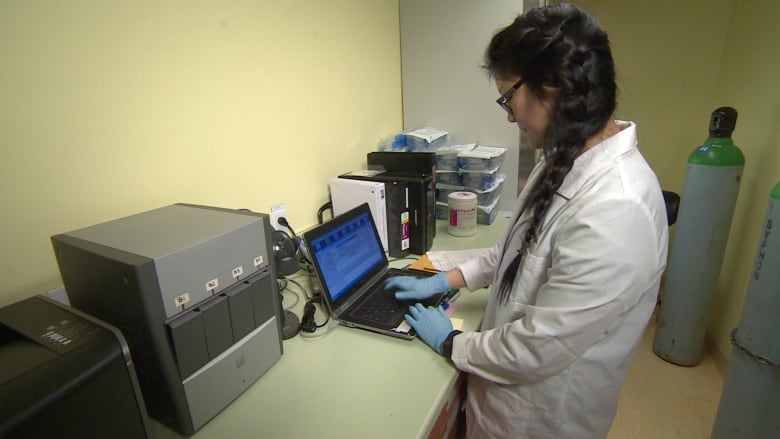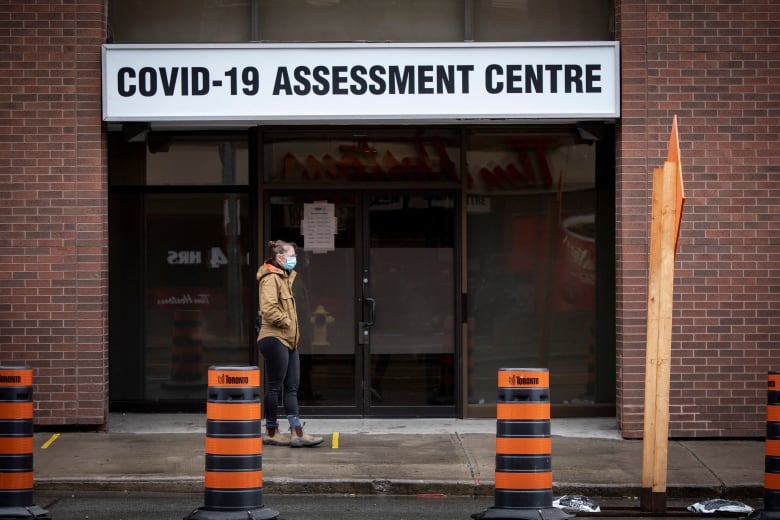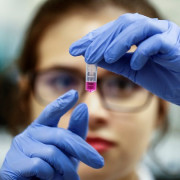Sensitive tests mean that many who test positive for covid barely carry any virus, making it hard to grasp true reach of disease
Содержание:
- Types of tests
- Reporting Problems to the FDA
- Questions and answers
- Is there an over-the-counter COVID-19 test I can take at home?
- Is there a prescription COVID-19 test I can take at home?
- How long does it take for coronavirus test results to come back?
- Who should get tested for coronavirus?
- When can I be around other people after I tested positive for COVID-19 but had no symptoms?
- Why the coronavirus actually kills about 10% of those who become symptomatic
- Why do we get false positives?
- Pitfalls of antibody testing
- The end of your illness
- All tests have limitations
- The knowledge of false positives/negatives are directly applicable
- How false positives occur
- How long am I contagious?
- How accurate are COVID-19 tests?
- How to manage COVID-19 at home
- What to do if your symptoms get worse
- The end of your illness
- Let’s start with the basics
Types of tests
Two types of COVID-19 tests are available: Diagnostic tests and antibody tests.
A diagnostic test can show if you have an active coronavirus infection. Currently there are two types of diagnostic tests: viral PCR tests that detect the virus’s genetic material, and antigen tests that detect specific proteins on the surface of the virus. Testing sites listed on this page use viral PCR tests.
Antigen tests usually provide results faster than viral PCR tests at lower cost, but have a higher chance of missing an active infection. Antigen tests are used on people suspected of having COVID-19 within 5-12 days of symptoms appearing.
Antibody tests detect past infections. They can determine if you are a good candidate to donate blood plasma. It can take 1-3 weeks after infection for your body to make antibodies.
You can find locations for both viral PCR and antibody tests on the COVID-19 Testing Sites in California map.
Reporting Problems to the FDA
The FDA encourages stakeholders to report any adverse events or suspected adverse events experienced with antigen tests for rapid detection of SARS-CoV-2.
- Voluntary reports can be submitted through MedWatch, the FDA Safety Information and Adverse Event Reporting program.
- Generally, as specified in a test’s EUA, device manufacturers must comply with applicable Medical Device Reporting (MDR) regulations.
- Health care personnel and clinical laboratory staff employed by facilities that are performing COVID-19 testing should follow the reporting requirements for authorized laboratories as specified in the test’s EUA.
Prompt reporting of adverse events can help the FDA identify and better understand the risks associated with medical devices.
Questions and answers
Is there an over-the-counter COVID-19 test I can take at home?
Yes. The U.S. Food and Drug Administration (FDA) issued an Emergency Use Authorization (EUA) for an over-the-counter fully at-home diagnostic test for COVID-19. The test is authorized for individuals two years of age or older, including those not showing symptoms.
The home test is a rapid, lateral flow antigen test, a type of test that runs a liquid sample along a surface with reactive molecules. The FDA allows it to be sold in places like drug stores, where a patient can buy it, swab their nose, run the test and find out their results in as little as 20 minutes.
Individuals with positive results should:
- Self-isolate
- Seek additional care from their health care provider
Individuals who test negative and experience COVID-like symptoms should follow up with their health care provider. It is possible to get a negative test result and still be infected with coronavirus.
For more information, see the FDA news release.
Is there a prescription COVID-19 test I can take at home?
Yes. The U.S. Food and Drug Administration (FDA) issued an Emergency Use Authorization (EUA) for an at-home COVID-19 diagnostic self-test. The authorization is for home use with self-collected nasal swab samples in individuals aged 14 and older. This test is currently authorized for prescription use only.
The test works by swirling the self-collected sample swab in a vial that is then placed in the test unit. In 30 minutes or less, the results can be read directly from the test unit’s light-up display.
Individuals with positive results should:
- Self-isolate
- Seek additional care from their health care provider
Individuals who test negative and experience COVID-like symptoms should follow up with their health care provider. It is possible to get a negative test result and still be infected with coronavirus.
For more information, see the FDA news release.
Turnaround time for coronavirus test results is usually less than two days. Approximately two-thirds are returned within a day and more than 85% are available within two days.
This turnaround time includes shipping time. So for labs that process home testing kits, turnaround time may depend on when an individual mails back their kit.
If you haven’t received your test results and it’s been several days, contact your healthcare provider, testing service, or local health department.Read more at California’s COVID-19 Testing Task Force.
You should get tested if you:
- Had with anyone who has tested positive for COVID-19
- Have COVID-19 symptoms
- Get a call from a contact tracer
- Are at high risk
If you think you may have been exposed, call your doctor.
When can I be around other people after I tested positive for COVID-19 but had no symptoms?
If you continue to have no symptoms, you can be with others after 10 days have passed since your test.The CDC has detailed recommendations for people who test positive but have no symptoms.
You should self-isolate from others in your household who have not tested positive. Sleep and stay in a separate room from them, and use a separate bathroom, if possible. Multiple infected people in the same household can use the same room for isolation.
Members of your household should get tested right away. They should quarantine for at least 14 days. Symptoms can develop even after testing negative within 14 days after exposure. Multiple people in the same household should not quarantine in the same room, since some may be infected.
In the United States, the official numbers currently show that 1.35 million people are confirmed as infected, while 80,351 people have so far died from the virus. If you take these numbers at face value, that would put the current Case Fatality Rate (CFR) for the coronavirus at 5.9%.
The infection numbers, though, are wildly over-inflated due to faulty testing kits that produce false positives. If we adjust the infection numbers down to a more realistic level, the CFR jumps significantly higher. And yes, there are likely some people dying from other things who have been incorrectly counted as COVID-19 deaths, but the Financial Times analysis of excess mortalities from all causes ends that argument by documenting a huge surge in recent deaths from any cause, regardless of what’s stated on death certificates.
If anything, the number of coronavirus deaths is being under-stated by perhaps 50% or so, while the number of coronavirus infections is being over-stated by a wide margin.
And we actually have a way to take a good guess at the degree by which those infection numbers are over-inflated.
We already know that many of these kits produce somewhere around 10 false positives per 100 people tested, or a 10% false positive rate (many kits are far worse). We can also intelligently estimate that right now somewhere around 2% of the US population has actually been infected. This is a rough estimate, but as you’ll see below, whether this is 1% or 4% doesn’t change the conclusions by much.
Now, if you test 100 people for the coronavirus, and 2 out of those 100 actually have the coronavirus, but the test kits you’re using have a false positive rate of 10 out of 100, then you will get, essentially 12 positives out of 100.
Notably, 10 of those positives are false, and 2 are real. This means the false positives are 500% higher than the real positives. And if you rely on those findings, you would incorrectly think that 500% more people have been infected than actually have.
This is precisely what the Stanford Study did. They ran tests that produced false positives, then they extrapolated that false finding to the entire population of California. From that, they incorrectly concluded that a huge percentage of California had already been infected, and therefore the Infection Fatality Rate (IFR) of the coronavirus was very, very small. As we show in this Natural News article, Stanford researchers likely produced 13 false positives for every 1 real positive.
That entire conclusion falls apart when you realize the testing kits they used were made in China. In fact, those particular kits were so unreliable that Stanford researchers tried to hide the origins of the kits in their paper, but internet sleuths found out the kits were actually made by Hangzhou Biotest Biotech, a company that ranked last place in testing kit accuracy. As ExtremeTech.com explained:
At the time Stanford did the study, there weren’t any FDA-approved COVID-19 antibody tests for clinical use. But for research purposes, the team purchased tests from Premier Biotech in Minnesota. Premier has started marketing a COVID-19 antibody test, but it doesn’t create it. The test listed on the company’s website, and that it appears Stanford used, is from Hangzhou Biotest Biotech, an established Chinese lab test vendor.
It also turned out that the Wall Street Journal writer who touted the stunning findings of the paper was one of the paper co-authors who failed to identify his obvious conflict of interest. So the entire study — and the subsequent WSJ editorial coverage of it — was a rigged scam, 100% science fraud parading around as breaking news to try to deceive America into thinking the coronavirus was no real danger at all. It was a propaganda con job, and sadly, most of the pro-Trump independent media fell for it and repeated the bad conclusions, misinforming their own audiences and causing many people to believe the virus was “no more dangerous than the flu.”
Peak Prosperity also explained this in a detailed video, which I covered in this important podcast:
If you really crunch the numbers on this, it turns out the coronavirus is 56 to 100 times more deadly than the regular flu. But to realize that, you have to weed through the deliberate disinformation being pushed by those who are trying to downplay the severity of the virus for political reasons. (A foolish ploy that will catastrophically backfire when the second wave of infections becomes impossible to deny.)
Why do we get false positives?
False positives can occur for many reasons, including normal human and system errors (for example mislabelling, data entry errors or sample mishandling).
Sometimes false positive test results could be due to a cross-reaction with something else in the sample, such as a different virus.
 Data entry errors can lead to false positives or false negatives.
Data entry errors can lead to false positives or false negatives.
Shutterstock
For COVID-19, the only routinely available option to confirm a positive result is to retest using the same method. This can address the false positives generated through sample contamination or human error.
Even so, some authorities recommend isolation for any person who returns a positive test, regardless of subsequent results.
Pitfalls of antibody testing
Policies on testing that are population based and without a specific clinical indication essentially amount to screening. This risks potential harm if the consequences of testing are not carefully considered. If testing is based on patient request, rather than clinically driven, we anticipate that rates of testing will be higher in more affluent populations, who are at lower risk of covid-19, in keeping with the inverse care law. This also limits the usefulness of data for estimates of seroprevalence, as a self-selecting population will not be representative. Concerns have been raised about the implications of the rapid rollout of antibody testing and the chief medical officer in Scotland has advised against on-demand testing.
The end of your illness
While procedures can be slightly different in different states, most people with COVID-19 will get a second COVID-test on about day 12 of their 14-day self-isolation period to see if they’re now testing negative for the virus, Dr Nespolon said.
If that’s the result you get, you’ll probably be advised when you can then return to normal activities, albeit still following all the other public health guidelines like physical distancing, cough etiquette and washing your hands.
Your state health department will be able to advise what the rules are where you live.
Some findings are now emerging that a few people are experiencing much more long-term symptoms, Dr Nespolon said.
These could include headaches, lethargy and ongoing muscle aches and pains.
People, particularly young adults who might not feel vulnerable at all, need to be aware there are consequences to getting COVID-19, Dr Nespolon said.
«It’s important for people to realise that it’s better to prevent it.»
All tests have limitations
Among the shortfalls of diagnostic testing is the possibility of false negatives (failing to detect a condition when it’s present) and false positives (detecting a condition when it’s absent).
It’s easy to see why false negatives can be a problem – we lose the benefits of early intervention.
But false positives can also cause harm, including unnecessary treatment. This is why positive screening tests are often followed up with a second, different test to confirm a diagnosis.
Examples include further imaging and possibly biopsy following a positive mammogram for breast cancer, or colonoscopy following positive screening for colon cancer.
Read more:
As restrictions ease, here are 5 crucial ways for Australia to stay safely on top of COVID-19
The knowledge of false positives/negatives are directly applicable
How do you declare a person COVID-19 positive? After you get a positive result from the test.
But, as we discussed, every test result is uncertain to some extent. So, we cannot actually say with 100% certainty that a person is COVID-19 positive, we can only say with high enough probability. Now, if we cast the testing process in terms of probability, here are a few quantities we can write,
P(COVID-19 positive| test = positive): This denotes the probability that the person is really COVID-19 positive given that the test result is positive. It is called a conditional probability expression. We want to calculate this. Now, if you look at the Bayes’ rule formula above, you will recognize it to be equivalent to the posterior expression P(A|B).
P(test = positive|COVID-19 positive): This is the likelihood P(B|A) in the Bayes’ rule. This is nothing but sensitivity i.e. how many true positives (test results) are there among all the positive cases (in reality).
P(COVID-19 positive): This is the probability of a random person having been infected by the COVID-19 virus. In the domain of medical testing, this is called the ‘prevalence rate’. This term appears in the numerator of the Bayes’ rule ( P(A) in the Bayes’ rule) as the Prior. This is the piece of the information that is not test-specific but needs domain knowledge or broader statistical measure. For COVID-19, experts may say, after pouring over a lot of data from all over the world that the general prevalence rate is 0.1% i.e. 1 out of 1000 people may be infected with the virus. Of course, this number can change based on the country, health system, active social distancing measure, etc. In particular, the antibody-test or the so-called Serological tests can give a good measure of this rate.
P(test=positive): This is the denominator in the Bayes’ rule equation i.e. P(B). This can be calculated as,
P(test=positive) = P(test=positive|COVID-19 positive)*P(COVID-19 positive)+P(test=positive|COVID-19 negative)*P(COVID-19 negative)
Clearly, this calculation takes into account the fact that we can get a positive test result both for a truly infected person or a FALSE POSITIVE for a non-infected person. The term P(test=positive|COVID-19 negative) is simply the FALSE POSITIVE rate calculated from the confusion matrix. The term P(test=positive|COVID-19 positive) is the sensitivity as appearing in the numerator (discussed above).
Therefore, we can see that all the characteristics of a medical test can be readily utilized in a Bayesian calculation.
But there is more to the Bayesian statistics than this!
How false positives occur
Lagacé-Wiens says four false positives have been recorded in Manitoba to date.
«It is in a way bad luck, and it’s a fact of just the number of samples that we’re having to process in these automated instruments,» he said.
Across Canada, health workers use what’s called «reverse-transcriptase polymerase chain reaction» (PCR) testing to confirm cases of COVID-19. In several places, they’re also used to confirm when someone is recovered.
The tests evaluate a sample, taken with a swab of cells at the back of the nose and throat, for trace amounts of the coronavirus’s RNA.
This can be done one at a time, as with the GeneXpert technology used to double-verify presumptive cases in Nunavut, or in lab-built robotic testing machines, which can process hundreds of tests at a time.
In lab-built machines, robotic instruments extract pieces of hundreds of different samples and feed them into a PCR test. That’s where cross-contamination can happen.

A technician uses the Gene Xpert testing machine at Qikiqtani General Hospital in Iqaluit. The machine is now used to provide preliminary COVID-19 test results in the territory, before they are confirmed by southern labs. (CBC)
«Every now and again, even though it’s sort of a very precise robotic instrument … there can be very slight traces of carryover from sample to sample,» Lagacé-Wiens explained. «That’s where most of these false positives probably come from.»
Lagacé-Wiens said this most often happens when there is a very strong sample next to a negative one. The result is usually a very weak positive.
«If it’s a very, very weak positive, that’s usually your first hint that it merits rechecking. Another is that if a sample right beside it is strongly positive,» he said.
«Usually, when labs see that, they’ll go back to the original sample and they’ll re-test it,» he said.
How long am I contagious?
Recent evidence suggests that people are only contagious during the first eight days of symptoms.
However, there is now good evidence that even those who are asymptomatic or presymptomatic can pass on the disease. So how long are they contagious?
«That’s a great question,» Cheng said. «If you are tested and you are found to be negative and you have no symptoms it is not likely that you’re contagious.»
If you have a positive test, how long you’re contagious depends on the individual, he added. But if you subsequently test negative, you are no longer considered contagious.
Otherwise, you should definitely not be contagious after two weeks — the amount of time officials recommend you self-isolate if you have COVID-19 symptoms or may have been exposed to COVID-19.
How accurate are COVID-19 tests?
There are a few ways to look at this.
As mentioned before, in people with symptoms, the nasal swab tests will detect the disease with an accurate result about 70 per cent of the time. However, Cheng said the accuracy is much higher in hospital patients with breathing tubes, who are swabbed in their trachea or lungs.
According to Dr. Kelly MacDonald, head of the infectious disease program at the University of Manitoba, the nasal swab test is accurate 99 per cent of the time in a laboratory setting, but in a clinical setting, errors can happen when the sample is taken. For example, the swabbing may not be done properly.
That said, if you get a positive test, you almost certainly have COVID-19 — the false positive rate is very low — less than one per cent of tests overall, estimates Dr. Philippe Lagacé-Wiens, a medical microbiologist at St. Boniface Hospital in Winnipeg.
On the other hand, MacDonald said you can’t have the same confidence about a negative test, as it may simply mean you have been tested too early, before viral levels are high enough to be reliably measured. That’s why people with symptoms who get a negative test result are told to self-isolate anyway.

People line up at a COVID-19 testing centre near Toronto Western Hospital on May 11, 2020. (Evan Mitsui/CBC)
How to manage COVID-19 at home
According to Australia’s National COVID-19 Clinical Evidence Taskforce, adult patients with mild COVID-19 can be managed in a similar way to people with seasonal flu (although, as you’re probably sick of us telling you, they’re very different illnesses).
So expect to be told to rest and to drink plenty of fluids.
There are no treatments for people who have mild cases of COVID-19, said Nial Wheate, who is the program director of undergraduate pharmacy at the University of Sydney.
«The treatments we have (remdesivir and dexamethasone) are for people who are seriously ill and hospitalised,» Dr Wheate said.
Any relief you can get is going to be purely symptomatic.
If you’ve got a headache you might take some paracetamol, said president of the Royal Australian College of General Practitioners Harry Nespolon.
«If you’ve got muscle aches and pains you might take some anti-inflammatories, which you can do, despite the early advice not to.»
It may also be worthwhile to let your regular GP, if you have one, know you’ve been diagnosed with COVID-19.
They’re «an additional resource to help take care of you», Dr Nespolon said, particularly if you have other medical problems that your state health department isn’t going to be managing.
What to do if your symptoms get worse
If any of your symptoms are getting worse, it’s important to reach out for medical assistance early, Dr Nespolon said, so you know what you should do next.
These could include worsening breathing problems or fever, but also more severe headaches or problems with your vision, as evidence is increasingly showing that severe COVID-19 isn’t just a respiratory infection.
There have also been cases of people with mild COVID-19 suddenly deteriorating in the second week of their illness.
As Victoria’s Chief Health Officer Professor Brett Sutton said on Tuesday:
You can call the National Coronavirus Helpline on 1800 020 080, 24 hours a day, seven days a week.
Some states have their own contact numbers, like Victoria’s coronavirus hotline 1800 675 398, which also operates around the clock.
Or get in touch with your GP, and of course, in an emergency situation call 000.
The end of your illness
While procedures can be slightly different in different states, most people with COVID-19 will get a second COVID-test on about day 12 of their 14-day self-isolation period to see if they’re now testing negative for the virus, Dr Nespolon said.
If that’s the result you get, you’ll probably be advised when you can then return to normal activities, albeit still following all the other public health guidelines like physical distancing, cough etiquette and washing your hands.
Your state health department will be able to advise what the rules are where you live.
Some findings are now emerging that a few people are experiencing much more long-term symptoms, Dr Nespolon said.
These could include headaches, lethargy and ongoing muscle aches and pains.
People, particularly young adults who might not feel vulnerable at all, need to be aware there are consequences to getting COVID-19, Dr Nespolon said.
«It’s important for people to realise that it’s better to prevent it.»
Let’s start with the basics
During testing for COVID-19, health workers take a sample from the nose (snot) or back of the throat (saliva) to see if the virus is present.
It looks for the genetic material of the virus, known as RNA.

There have been almost 2.5 million COVID-19 tests completed across Australia since January 22.(ABC News: Brendan Esposito)
The test needs a minimum amount of RNA present for it to get a positive result.
Scientists could adjust the test to find smaller amounts of the virus RNA but that would increase the chance of a positive result where the virus wasn’t actually present.
So if it is that simple, how do false positives occur — that is, people not carrying the COVID-19 virus getting test results indicating a positive result?
University of Queensland virologist Ian Mackay said false positives were rare and usually only caused by contamination of the test once it was back in the lab.
«These tests are really sensitive so if there is a little bit of carryover from DNA produced in a previous test to the new test, then that could produce a positive result that’s actually not meant to be there,» Professor Mackay said.
He said laboratories across Australia were doing record numbers of tests, so it was possible that a positive result from a previous sample could contaminate another sample.
«It doesn’t happen in good labs that have good processes,» he said.
The timing of when the test was taken was important too, and could potentially lead to incorrect results, he said.
If a sample was taken too soon after someone was exposed to COVID-19, there may not be enough of the virus in the nose or throat to be detected.
«Or it could be that it’s quite late in the disease so there is not much of the virus left,» Professor Mackay said.







